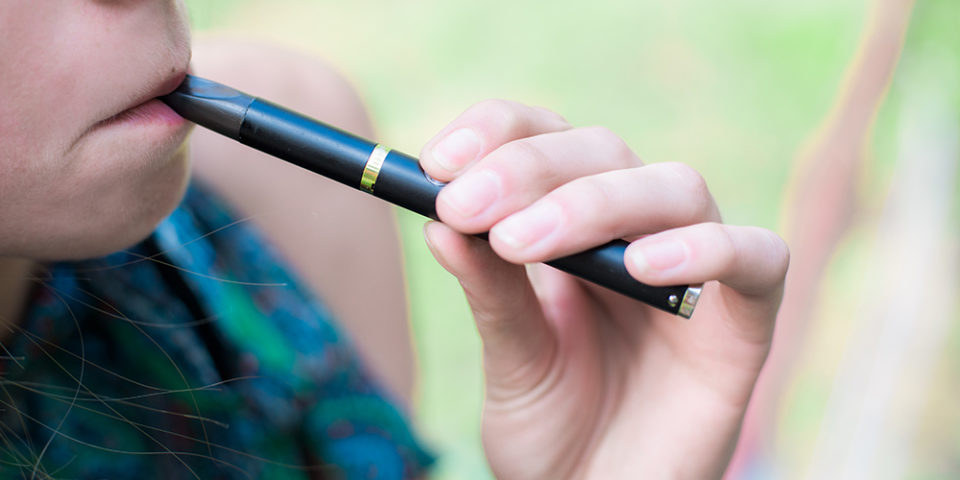Kids and vaping: What you need to know
Traditional cigarettes and flavored cigarillos are somewhat out, but electronic cigarettes are very much in with both middle and high school age children. Using e-cigarettes, which is usually referred to as vaping, has become more commonly used than any other tobacco product among middle and high school students.
Jennifer Carney, DO, shared what parents need to know about vaping and how to prevent your child from participating.
What is vaping?
Vaping is the act of inhaling and exhaling the heated aerosol, or vapor, produced by an electronic cigarette. The aerosol typically contains nicotine, appealing flavors, and other constituents that are harmful to adolescent and child health.
Why are electronic cigarettes bad for kids?
Electronic cigarettes typically contain toxins and the chemical nicotine, which is quickly addictive to the adolescent brain and can harm adolescent brain development. The more frequently young people vape, the more difficult it becomes for them to quit.
This addiction can adversely affect critical areas of the brain responsible for attention, learning, mood and impulse control. In addition, exposure to secondhand vapor from e-cigarettes is harmful to growing lungs. If the concentrated e-cigarette solution is swallowed or comes in contact with the skin, it can be poisonous.
The solutions used in e-cigarette devices contain harmful chemicals, including antifreeze, cancer-causing substances, heavy metal and ultra-fine particles that can penetrate deep into the lungs.
“It is important to understand that while these are not good for kids, they are also not good for adults either,” said Dr. Carney.
Teens may be unaware of the presence of nicotine in e-cigarettes. Some brands claiming to have no nicotine have been found to contain measurable amounts. Electronic cigarettes also often contain flavors with immense appeal to youth, such as bubble gum, fruit, candy, coffee, piña colada, peppermint or chocolate. These flavorings have also been shown to be unsafe for inhalation.
“A substantial number of adolescents who vape become addicted to nicotine and eventually transition to smoking traditional cigarettes. They are also more likely to use marijuana,” said Dr. Carney.
E-cigarette, or vaping, product use-associated lung injury (EVALI) or vaping-associated pulmonary injury (VAPI) was noted to cause more than 2,800 hospitalizations and 68 deaths across the United States. Tetrahydrocannabinol (THC)-containing e-cigarette or vaping products was linked to most EVALI cases. So was Vitamin E acetate, an additive in vape cartridges e-liquids.
There is no ‘safe’ kind of e-cigarette.
What can parents and family members do?
Talk openly with your children and teens about the dangers of electronic cigarettes. Ask what they know about vaping. Do they have any friends who are doing this? Have they been offered one or tried it before? Help your children learn about the chemical nicotine and its addictive properties.
If you smoke or vape, do not do so in the house or car. If you use electronic cigarettes, keep them and their liquid nicotine out of reach of children and in a locked location. Talk with your doctor about safe ways to quit tobacco products.
Find the care you need, close to home
Our primary care physicians provide well visits and everyday care when you need it with compassion and expertise.
Find Primary Care Near You

